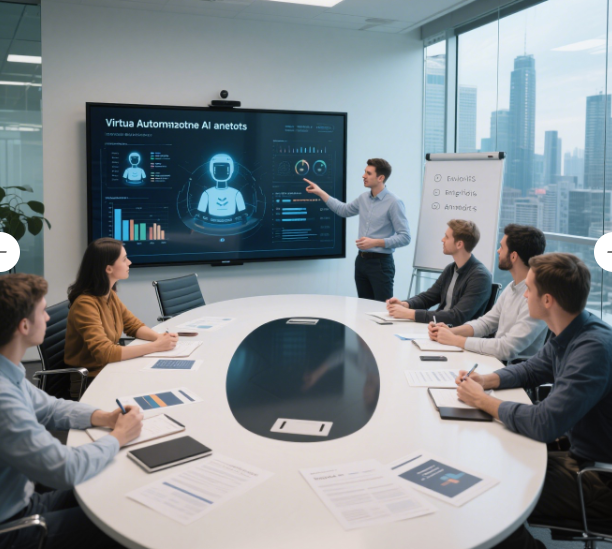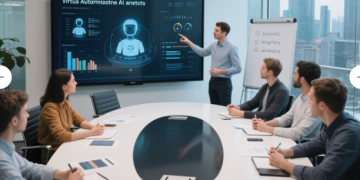The Rise of Virtual Autonomous AI Agents
Virtual Autonomous AI Agents—software entities that perceive environments, make decisions, and act without human intervention—are redefining human-machine interaction. Unlike traditional AI, these agents combine autonomy, adaptability, and advanced tool-use capabilities to execute multi-step tasks across virtual and physical realms. By 2028, Gartner predicts 15% of daily work decisions will be handled autonomously by such agents, signaling a paradigm shift in efficiency and operational scalability.
Core Capabilities Driving Adoption
- Autonomous Task Execution:
Agents like Microsoft’s Copilot and Salesforce’s Agentforce delegate complex workflows—from data analysis to customer service—reducing human effort by 40% in sectors like finance and healthcare. For example, Alibaba’s “Xiaomi”service processes 100,000+ daily queries autonomously. - Multimodal Intelligence:
Agents now integrate text, audio, and visual data for holistic environmental understanding. In autonomous driving, multimodal systems lower accident rates by 20%. Google’s Gemini 2.0 Flash exemplifies this, enabling seamless cross-modal reasoning. - Self-Optimization via Memory:
Short-term and long-term memory modules allow agents to learn from interactions. IBM’s Watson Health uses this to refine medical diagnoses, improving treatment accuracy by 70%.
Industry-Specific Breakthroughs
- Finance:
JPMorgan’s COiN platform automates document analysis, saving 360,000+ hours annually. Agents now execute trades, monitor fraud, and forecast markets with sub-millisecond latency. - Healthcare:
RAG-enhanced agents (Retrieval-Augmented Generation) access real-time research to assist diagnoses, boosting patient satisfaction by 30%. Projects like NVIDIA’s medical AI agents simulate surgeries in virtual environments before real-world application. - Customer Service:
Interface Agents (e.g., ChatGPT’s screen-sharing mode) navigate web/desktop UIs to resolve user issues, cutting resolution times by 50%.

Overcoming Critical Challenges
Despite promise, three hurdles persist:
- Data Privacy:
60% of enterprises cite security as a top concern. Solutions like federated learning (training models on-device without data sharing) are emerging to address this. - Task Complexity:
Agents struggle with open-ended scenarios. Stanford researchers note that ”planning modules” must evolve to handle ambiguous goals. - Ethical Boundaries:
Deepfake-enabled virtual agents risk misinformation. The EU’s upcoming AI Act mandates transparency in agent-generated content.
Future Trajectory: Virtual-to-Physical Integration
Leading labs are bridging virtual and physical worlds. Fraunhofer Institute’s Alexander Thurn (2025) highlights:
*”Agents trained in digital twins can simulate real-world tasks—like robotic assembly or disaster response—before field deployment, slashing error rates by 45%.”**
By 2026, 80% of enterprises will deploy such hybrid agents for mission-critical operations.
Conclusion: The Agent-Driven Economy
Virtual Autonomous AI Agents are not mere tools but collaborative partners reshaping productivity. As they evolve from scripted responders to proactive problem-solvers, industries must prioritize ethical frameworks and human-AI synergy. For businesses, early adoption now promises competitive advantage in the hyper-automated future.
Bitora: Where innovation meets integrity in the decentralized economy.
Author Bio:
Alex Rivera is a fintech strategist with a decade of experience in AI-driven financial systems. An MIT alumnus and contributor to the IEEE Standards Association, he specializes in blockchain-AI convergence and decentralized governance models.



























